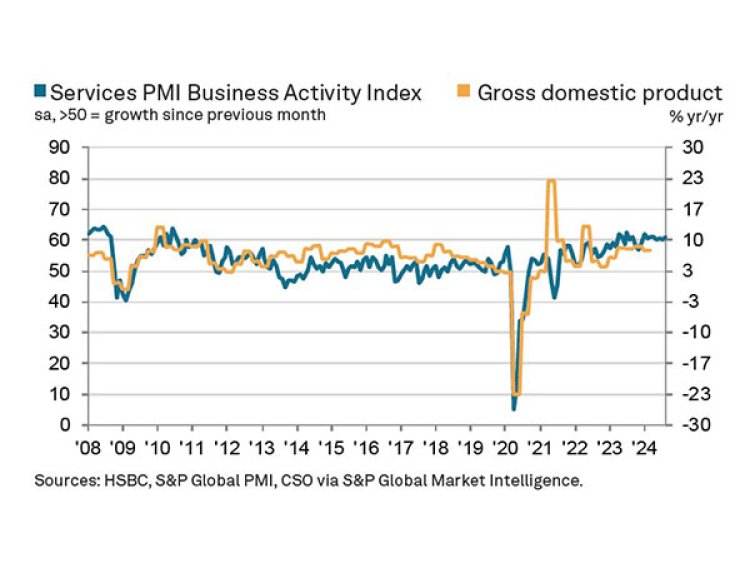India's services sector sees strongest growth of five months in August, rising to 60.9

New Delhi, India: India's services sector demonstrated robust growth in August, with the HSBC India Services Business Activity Index rising to 60.9, marking its strongest expansion since March.
According to HSBC, this index, which has now remained in expansion territory for thirty-seven consecutive months, reflects the ongoing momentum in the sector, underpinned by productivity gains and positive demand trends.
The August reading of 60.9, up from 60.3 in July, is above the long-run average, indicating a strong and resilient services economy.
Pranjul Bhandari, Chief India Economist at HSBC, commented on the findings, stating, "The Composite PMI for India continued to show strong growth in August, driven by accelerated business activity in the service sector, which experienced its fastest expansion since March.
The growth was driven by steady improvements in productivity and sustained demand, with new orders continuing to rise for the thirty-seventh month in a row.
The rate of new order growth accelerated slightly from July, reaching its highest level since April. Over one-quarter of the surveyed companies reported improved business conditions, while only 5 per cent indicated a decline.
Bhandari said, "This growth was largely fuelled by an increase in new orders, particularly domestic orders. Employment levels remained robust, though there was a slight decrease in the pace of hiring compared to July. On a positive note, input costs rose at their slowest pace in six months, with both the manufacturing and service sectors exhibiting the same pattern. Consequently, output price inflation receded in August."
Among the various sub-sectors, finance and insurance emerged as the best-performing area, showing the highest growth in both output and new business. This sector's strong performance highlights its pivotal role in driving the overall expansion of India's service economy.
While domestic sales were the primary driver of growth, the pace of new export business increased at a slower rate in August, easing to a six-month low.
Nevertheless, the rise in export orders remained significant, with firms reporting better demand from regions including Asia, Australia, Europe, Latin America, the Middle East, and the US.
Service providers continued to face rising operating expenses due to increased costs for food, labour, and transportation. However, the overall rate of input cost inflation was modest, marking the weakest increase since August 2020.
Despite these cost pressures, fewer than 4 per cent of companies raised their average selling prices compared to July, leading to a moderate overall rate of charge inflation in the services sector. Notably, the rise in output prices was slower than in the previous month.
The survey also revealed that Consumer Services experienced the sharpest increase in input costs during August, while charge inflation was most pronounced in the Transport, Information, and Communication sub-sectors.
Confidence in the future outlook for business activity remained positive, supported by rising backlogs and sustained growth in new business, which continued to drive job creation across the services sector. However, the pace of employment growth slowed to a four-month low.
The rate of increase in outstanding business volumes also decelerated, reaching its weakest level since February.
Despite the overall positive sentiment, the level of business confidence for the year ahead slipped to a 13-month low. While 21 per cent of service providers expected an increase in output over the next 12 months, down from around 30 per cent in July, some firms expressed concerns about competitive pressures affecting their outlook.
"However, the outlook for the Indian private sector over the next year has moderated, reaching its lowest level in 15 months due to competitive pressure, although the Future Output Index remained above the long-term average," Bhandari added.















































